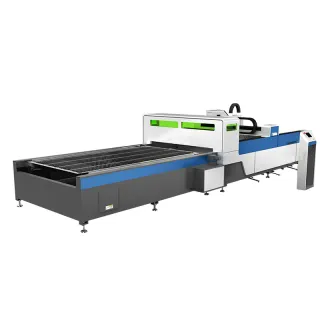A Comprehensive Guide to Brass Laser Cutting Machine
In the realm of precision manufacturing, brass laser cutting machines have emerged as indispensable tools, offering unparalleled accuracy and versatility in working with brass materials. This comprehensive guide aims to provide an in-depth understanding of the capabilities, applications, and benefits associated with brass laser cutting machines.
Understanding Brass Laser Cutting
Precision in Action
Brass laser cutting machines utilize advanced laser technology to precisely cut through brass sheets and materials. This cutting-edge technology allows for intricate designs, shapes, and patterns, making these machines pivotal in industries that demand high precision and aesthetic appeal.
The Intricacies of Laser Cutting
The process involves focusing a laser beam onto the brass surface, melting or vaporizing the material in the path of the laser. Computer numerical control (CNC) systems guide the laser, ensuring precise cuts according to programmed designs. Brass laser cutting machines are particularly adept at handling various thicknesses of brass with minimal heat-affected zones.
Key Features and Advantages
Superior Precision
One of the standout features of brass laser cutting machines is their ability to achieve superior precision. The focused laser beam allows for intricate cuts and sharp edges, making them ideal for applications where accuracy is paramount.
Versatility in Brass Thickness
Brass laser cutting machines exhibit versatility in handling different thicknesses of brass materials. Whether thin sheets or thicker plates, these machines can adapt to a wide range of material specifications, providing flexibility in manufacturing.

Applications Across Industries
Architectural Detailing
In architectural applications, the precision of metal laser cutting machines is harnessed for intricate detailing in building facades, ornamental structures, and interior design elements. The ability to create complex patterns adds a touch of sophistication to architectural designs.
Electronics and Components
The electronics industry benefits from the precision and efficiency of brass laser cutting machines in the production of intricate components. From circuit boards to casings, the ability to cut brass with minimal distortion ensures the quality and reliability of electronic devices.
Considerations for Implementation
Material Composition
Understanding the specific composition of the brass material is crucial when implementing laser cutting. Brass alloys may vary, and the laser cutting parameters may need adjustment based on the alloy's properties to achieve optimal results.
Design Complexity
Brass laser cutting machines excel in handling complex designs and patterns. When choosing a machine, consider the intricacy of your design requirements, ensuring that the selected machine can meet the demands of your intended applications.
Maintenance and Care
Regular Calibration
Maintaining the optimal performance of a brass laser cutting machine requires regular calibration and maintenance. Calibration ensures that the laser remains accurately aligned, guaranteeing precision in every cut.
Efficient Cooling Systems
Given the thermal nature of laser cutting, efficient cooling systems are essential to prevent overheating and ensure consistent cutting quality. Regular checks and maintenance of cooling systems contribute to the longevity of the machine.
Conclusion
In conclusion, brass laser cutting machines stand as technological marvels, empowering manufacturers with the ability to transform brass materials with unmatched precision. From architectural embellishments to intricate electronic components, the applications are diverse, highlighting the versatility of these cutting-edge machines. Stay at the forefront of precision manufacturing by harnessing the capabilities of brass laser cutting technology.
448
0
0
All Comments (0)
If you are interested in sending in a Guest Blogger Submission,welcome to write for us!


Comments